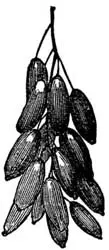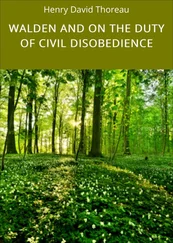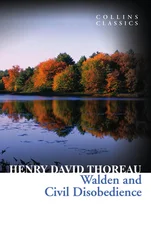J. Walden - Soil Culture
Здесь есть возможность читать онлайн «J. Walden - Soil Culture» — ознакомительный отрывок электронной книги совершенно бесплатно, а после прочтения отрывка купить полную версию. В некоторых случаях можно слушать аудио, скачать через торрент в формате fb2 и присутствует краткое содержание. Жанр: Руководства, Биология, Компьютерное железо, foreign_edu, на английском языке. Описание произведения, (предисловие) а так же отзывы посетителей доступны на портале библиотеки ЛибКат.
- Название:Soil Culture
- Автор:
- Жанр:
- Год:неизвестен
- ISBN:нет данных
- Рейтинг книги:3 / 5. Голосов: 1
-
Избранное:Добавить в избранное
- Отзывы:
-
Ваша оценка:
- 60
- 1
- 2
- 3
- 4
- 5
Soil Culture: краткое содержание, описание и аннотация
Предлагаем к чтению аннотацию, описание, краткое содержание или предисловие (зависит от того, что написал сам автор книги «Soil Culture»). Если вы не нашли необходимую информацию о книге — напишите в комментариях, мы постараемся отыскать её.
Soil Culture — читать онлайн ознакомительный отрывок
Ниже представлен текст книги, разбитый по страницам. Система сохранения места последней прочитанной страницы, позволяет с удобством читать онлайн бесплатно книгу «Soil Culture», без необходимости каждый раз заново искать на чём Вы остановились. Поставьте закладку, и сможете в любой момент перейти на страницу, на которой закончили чтение.
Интервал:
Закладка:
BALM
This is a medicinal plant, very useful, and easily raised. A strong infusion of the leaves, drank freely for some time by a nervous, hypochondriacal person, is, perhaps, better than any other medicine. It is also good in flatulency and fevers.
Its propagation is by slips or roots. It is perennial, affording a supply for many years. Gather just as the blossoms are appearing, and dry quickly in a slow oven, or in the shade. Press and do up in white papers, and keep in a tight, dry drawer, until needed for use.
BARBERRY

Barberries.
A prickly shrub, from five to ten feet high, growing wild in this country and in Europe, on poor, hard soils, or in moist situations, by walls, stones, or fences.
Its propagation is by seeds, suckers, or offshoots.
This shrub is used for jellies, tarts, pickles, &c. Preserves made of equal parts of barberry and sweet apples, or outer-part of fine water-melons, are very superior. It is also one of the best shrubs for hedge.
The bark has much of the tannin principle, and with the wood, is used for coloring yellow. Shrub, blossoms, and fruit, are quite ornamental, forming a beautiful hedge, but rather inclined to spread. Will do well on any land and in any situation. The discussion in New England about its blasting contiguous fields of grain, is about as sensible as the old witchcraft mania. Every garden should have two or three.
BARLEY
Does best on land which was hoed the previous year. If properly tilled, such land is rich, free from weeds, and easily pulverized. Sod, plowed deep in the fall, rolled early in the spring, well harrowed, the seed sown and harrowed in, and all rolled level, will produce a good crop. Two bushels of seed should be sowed on an acre, unless the land be very rich; in that case, one half-bushel less. Essential to a good crop is rain about the time of heading and filling. Hence early sowing is always surest. In many parts of the country it is of little use to sow barley, unless it be gotten in VERY EARLY. In not more than one season in twelve can you get a good crop of barley from late sowing in all the middle and western states. Barley is more favorably affected than any other grain, by soaking twenty-four hours before sowing, and mixing with dry ashes. A weak solution of nitre is best for soaking the seed.
Varieties are two, four, and six rowed. The two-rowed grows the tallest, and is most conveniently harvested. It is controverted whether the six-rowed variety yields the largest crop to the acre. If the weather be dry, and the worms attack the young plants, rolling when two or three inches high, with a heavy roller, will save and increase the crop. Rolling is a great help to the harvesting, as it levels the surface.
Harvesting should always be attended to just as it turns, but by all means before the straw becomes dry. If it stands up, cut with cradle or reaper, and bind. If lodged, cut with a scythe, and cure in small cocks like clover. Standing until very ripe, or lying scattered until quite dry, is very wasteful.
Products are all the way from fifteen to seventy bushels to the acre, according to season and cultivation. Reasonable care will secure an average annual crop of forty-five or fifty bushels per acre, which makes it a profitable crop while the demand continues. It is a good crop for ground feed for all animals, the beards being a little troublesome when fed whole. The straw is one of the very best for animals. Barley requires the use of the land only ninety days, leaving it in good condition for fall-grain.
Used for malting, and for food for men and beasts. It makes handsome flour and good bread. Hulled, it is a better article of food than rice.
It succeeds well on land not stiff and tenacious enough for wheat, or moist and cool enough for oats. If farmers should raise only for malt, the nation would become drunk and poor on beer, and the market would be ruined. But raised as food, it is one of the most profitable agricultural products.
BARNS
A barn should always front the north. The yard for stock should be on the south side, with tight fences for protection on the east and west. As this is designed for winter use, it is a great saving of comfort to the creatures. The barn-yard should be hollowed out by excavation, until four or five feet lower in the centre than on the edges. The border should be nearly level, inclining slightly toward the centre, to allow the liquid in the yard to run into it for purposes of manure. The front of a barn should be on the summit of a small rise of ground, to allow water to run away from the door, to prevent mud. In hilly countries it is very convenient to build barns by hills, so as to allow hay and grain to be drawn in near the top, and be thrown down, instead of being pitched up. These general principles are sufficient for all ordinary barns. Those who are able to build expensive barns had better build them circular, eight or sixteen square, and one hundred feet in diameter—the lower part, to top of stable, of stone. Let the stable extend all around next to the wall, and a floor over the stable, that teams may be driven all around to pitch into the bays, and upon the mows and scaffolds, at every point. Thus teams may go round and out the door at which they entered. Such a floor will accommodate several teams at the same time. The cellar should be in the centre, surrounded by the stable. Such a cellar would never freeze, and would hold roots enough for one hundred head of cattle, which the stable would easily accommodate. Let the mangers be around next the cellar, for convenience of feeding. Such a barn would be more convenient for a dairy of one hundred cows, or for winter-fattening of cattle, than any other form. It would cost no more than many barns in western New York that are not half as convenient.
BEANS
These are divided into two classes—pole and bush beans. They are subdivided into many varieties. We omit the English, or horse-bean, as being less valuable, for any purpose, than our well-known beans or peas. Pole beans are troublesome to raise, and are only grown on account of excellence of quality, and to have successive gatherings from the same vines. Pole beans are only used for horticultural purposes.
Field-Beans. —For general culture there are three varieties of white—small, medium, and large. Of all known beans, we prefer the medium white. The China bean, white with a red face, is an early variety. All ripen nearly at the same time. It cooks almost as soon as a potato, and is good for the table; but it is less productive, and less saleable because not wholly white. For planting among corn, as for a very late crop, this bean is valuable, because it matures in so short a time. Good beans may be raised among corn, without injury to the corn-crop. This can only be done when it is designed to cultivate the corn but one way. Many fail in attempts to grow beans among corn, by planting them at first hoeing. The corn, having so much the start, will shade the beans and nearly destroy them. But plant at the same time of the corn, and they will mature before the corn will shade them much, and not be in the way even of the ordinary crop of pumpkins. But double-cropping land in this way, at any time, is of very doubtful utility. A separate plat of ground for each crop, in nearly all cases, is the most economical. To raise a good crop of beans, prepare the soil as thoroughly as for any other crop. Beans will mature on land so poor and hard as to be almost worthless for other crops. But a rich, mellow soil is as good for beans as anything else, though not so indispensable. Drill in with a planter as near together as possible, and allow a cultivator to pass between them. One bushel to the acre on ordinary land, and three fourths of a bushel on very rich land, is about the quantity of seed requisite. Hoe and cultivate them while young. Late cultivation is useless—more so than on most other crops. Beans should not be much hilled in hoeing, and should never be worked when wet. All plants with a rough stalk, like the bean, potato, and vine, are greatly injured, sometimes ruined, by having the earth stirred around them when they are wet, or even damp. Beans are usually pulled; this should be done when the latest pods are full-grown, but not dry. Place them in small bunches on the ground with the roots up. If the weather be dry, they need not be moved until time to draw them in. If the weather be damp, they should be stacked loosely in small stacks around poles, and covered with straw on the top, to shed rain. Always haul in when very dry. Avoid stacking if possible, for they are always wasted rapidly by moving. In drawing in, keep the rack under them covered with blankets to save those that shell.
Читать дальшеИнтервал:
Закладка:
Похожие книги на «Soil Culture»
Представляем Вашему вниманию похожие книги на «Soil Culture» списком для выбора. Мы отобрали схожую по названию и смыслу литературу в надежде предоставить читателям больше вариантов отыскать новые, интересные, ещё непрочитанные произведения.
Обсуждение, отзывы о книге «Soil Culture» и просто собственные мнения читателей. Оставьте ваши комментарии, напишите, что Вы думаете о произведении, его смысле или главных героях. Укажите что конкретно понравилось, а что нет, и почему Вы так считаете.












